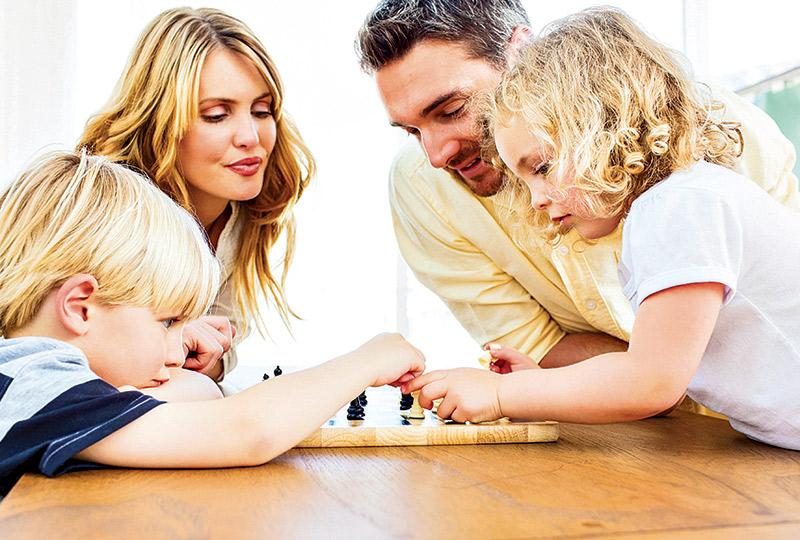
Bunking up: Strategies for shared-room success
By Malia Jacobson
Corey and Katey Hage’s second son, Josiah, was destined for a shared bedroom from day one. The Hages wanted him to bunk up with his older brother, Ezra, to conserve space in the family’s modestly-sized home and help the boys build a lasting bond.
But reaching the goal wasn’t easy. Sleeping near a sibling took some getting used to for both boys, and the Hages spent several months moving Josiah in and out of Ezra’s room. In the end, it took three tries for the new sleeping arrangement to finally take hold. “There were times when I wondered if it would ever work,” says Katey.
Their persistence paid off—Josiah and Ezra, now 4 and 6, have been happy roommates for three-and-a-half years. As bunkmates, the boys enjoy sharing a bedtime routine and chatting about their days as they drift off to sleep. They’ve learned to compromise and resolve conflict. Most importantly, they’ve learned to cherish their relationship, says Hage.
“The idea of each child having his or her own bedroom is a fairly recent phenomenon in history,” says James J. Crist, Ph.D., psychologist and co-author of Siblings: You’re Stuck With Each Other, So Stick Together. People have shared habitats forever, so parents shouldn’t feel bad if kids need to share bedrooms, he says. In fact, sharing a bedroom with a sibling can be an irreplaceable bonding experience.
And the early childhood years can be a great time to try a shared-room arrangement, because young kids haven’t had time to get used to having their own bedroom. “The younger kids start sharing a bedroom, the more normal it feels,” he says.
Small homes, big benefits
Shared bedrooms are the norm throughout much of the world, and a trend toward smaller homes is making shared bedrooms a reality for American families. The McManions of years past are giving way to more economical, efficient abodes where affordability and energy efficiency are prioritized over square footage, according to a recent survey by Better Homes & Gardens.
Room sharing is a fact of life for families choosing smaller houses, or those staying put in smaller homes as their family grows, like Anna and Aaron Petersen. The family hopes to eventually add a third bedroom to their 100-year-old bungalow. But for now, 6-year-old Ephraim and 3-year-old Shiphrah share a bedroom.
Though many families put kids in shared bedrooms out of necessity, it’s not a matter of making do, says Crist. Shared bedrooms can be a boon to siblings, helping anxious kids sleep better and fostering cooperation, negotiation, and close family bonds. Some children don’t like sleeping alone and would actually prefer a shared bedroom over a solo bedroom, he notes.
Sleep times two
But some families will experience a few bumps on their way to room-sharing success. Sleep problems held up the Hage brothers’ move to a shared room. Ezra is an early riser; Josiah still needed multiple daytime naps. Ultimately, the boys were able to bunk up after Katey worked to get their sleep routines in sync. Success was all about timing, she says. “We had to get them getting up, napping, and going to bed at the same time. Everything works much better that way.”
When one boy goes to bed after the other, the Hages play a “quiet game,” getting him ready for bed and tucking him in as noiselessly as possible. To keep early-rising Ezra from waking his brother before dawn, he has a special clock that tells him when it’s time to get up.
To keep Ephraim from barging into the bedroom during Shiphrah’s naps, the Petersens moved the kids’ toys to the den. Aside from this small accommodation, having the kids in one bedroom has been remarkably easy, says Anna. “We thought they’d wake each other up, but they don’t—kids are deeper sleepers than we realize.”
Making it work
When kids share rooms, discipline requires some parental creativity. The time-honored tactic of sending each child to their bedroom for time-out doesn’t work in shared-room scenarios. But bedrooms aren’t the only place that kids can cool off or take a break, notes Crist. Kids who need solo time can chill in the bathroom, the den, or even a parents’ room.
What about opposite-sex bunkmakes? Crist says the arrangement can work well in the early years, before kids approach puberty and develop a sense of modesty about their bodies. Kids who feel self-conscious can dress and undress in the bathroom or another room in the home. Opposite-sex room-sharing generally works better when siblings are close in age, he notes—kids at vastly different developmental stages may not feel as comfortable sharing close space with an opposite-sex sibling.
Malia Jacobson is a nationally published sleep and health journalist and mom of three. Her most recent book is Sleep Tight, Every Night: Helping Toddlers and Preschoolers Sleep Well Without Tears, Tricks, or Tirades.
SIDEBAR
Happy Roommates: Making Shared Rooms Work
Transitioning kids to a shared room? Here’s how to smooth the bumps.
Validate Feelings
Ask the child how they feel about sharing a room, and validate their feelings. Instead of telling kids “Too bad, you have no choice,” let them know that you understand this might bring up lots of feelings for them.
Prepare The Room
Before transitioning moving a sibling into a child’s bedroom, physically prepare the bedroom for its new inhabitant. Moving a crib or bed into the room in advance helps the older child get excited about the new arrangement.
Create Sacred Space
Give each child a private space within the shared bedroom, whether it’s their own bed, a bookshelf, or a bulletin board. Let each child help decorate their private space, and designate it off-limits to sibs.
Pick Cool-Down Spots
Designate “cool-down” places in other rooms in the house where kids can take a solo break without their sib.
Source: James J. Crist, Ph.D.





